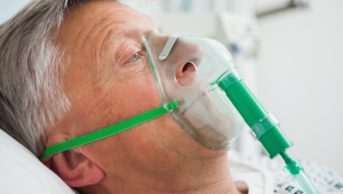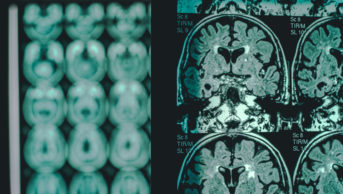This content was published in 2008. We do not recommend that you make any clinical decisions based on this information without first ensuring you have checked the latest guidance.
In 2005, the UK clinical research network (UKCRN) was established with funding from the Department of Health to provide “a world-class health service infrastructure to support clinical research in the UK”.
The DoH published its research and development strategy (entitled “Best Research for Best Health”) in 2006. The mission statement in this document reads: “We aim to create a health research system in which the NHS supports outstanding individuals working in world-class facilities, conducting leadingedge research, focused on the needs of patients and the public.” The structure of UKCRN is explained in Panel 1.
Such a sweeping intention was bound to have considerable consequences for the NHS and, therefore, for hospital pharmacy. By the summer of 2007, the pharmacy department at Mid Cheshire Hospitals NHS Foundation Trust was experiencing such escalating requests for dispensing investigational medicinal products (IMPs) that the levels of potential activity within other hospitals in north-west England were queried through the North West Trust Chief Pharmacists network.
In November 2007, the network agreed to establish a task-and-finish group to investigate regional capacity and capability for conducting clinical trials.
Group formation
Nominations were received from across the north west and the group first met in December 2007. Its terms of reference are shown in Panel 2.
The group initially consisted of seven pharmacists, including chief pharmacists from general and specialist trusts, the regional lead pharmacist for quality control, clinical trials pharmacists and a senior clinical trials technician.
During the first meeting, the group decided to:
- Perform a baseline assessment of current clinical trials activity, pending activity and other relevant factors at hospitals across the region (using a questionnaire)
- Network with existing pharmacy or clinical trials initiatives elsewhere in the UK
- Interface with the North West Clinical Trials Group via its lead pharmacist
The group’s membership was expanded to allow comprehensive local research networks (CLRNs) in the north west to be involved. As a result, Matthew Peak, director of the Cheshire, Merseyside and North Wales Medicines for Children Network, and Jacqui Pirmohamed, senior manager of the Merseyside and Cheshire CLRN, were invited to join the group. Contact was also made with Tim Root, specialist pharmacist for clinical governance and technical services, Chelsea and Westminster Hospital, who contributed to a joint UKCRN and DoH initiative to develop a clinical trials costing tool.
The group also liaised with the Greater Manchester CLRN through Jonathan Cooke, director of research and development and clinical director of medicines management and pharmacy at University Hospital of South Manchester NHS Foundation Trust, via the North West Trust Chief Pharmacists network.
Questionnaire
After initial discussion and feedback, the group decided on a range of issues to be investigated. These included:
- Trial activity (current and pending)
- Staffing levels (currently funded, currently deployed and projected future requirements)
- Trust chief pharmacists’ perceived ability to recruit
- Trust chief pharmacists’ perceived ability to access and use funding
- Adequacy of storage facilities
- Perception of activities most suitable for centralisation
- Availability of training and qualified persons
- Whether prescriptions charges were levied when applicable
The survey was sent to 30 trusts in January 2008, of which 20 responded.
Activity
There is considerable variation in the numbers of active trials operating within hospital pharmacies in the north west of England (1–170). There is also great variation in the numbers of trials pending (0–63). These figures do not include trials that have been requested but turned down.
Two-thirds of trusts had at least 25 per cent of their current workload pending, and a quarter had at least 50 per cent of their current workload pending. These pending trials are expected to begin later this year, so the increase in workload will be significant. One-third of responders had been forced to turn down new trials. Overall, there are over 500 clinical trials in the National Institute of Health Research’s portfolio and demand is set to rise further.
Resources
Resources committed to clinical trials by pharmacy departments invariably exceeded the resources funded. Again, there was great variation in the number of trials operated per whole-time equivalent staff member (WTE), both in terms of staff committed (6–113 trials per WTE, mean 37.4) and staff funded (18–315 trials per WTE, mean 92.6).
To illustrate the potential impact of the additional activity for hospitals in the north west, the questionnaire results suggest that the number of extra pharmacists required to complete the extra work will equate to almost all of the region’s annual preregistration graduate output. In addition, two years of technician output might be necessary.
Ability to recruit
Chief pharmacists were asked to rate their confidence in recruiting various grades of staff, using a simple visual scale (0 per cent signified no confidence, 100 per cent signified complete confidence). The average results were as follows:
- Permanent pharmacists — 47 per cent
- Temporary pharmacists — 28 per cent
- Permanent technicians — 56 per cent
- Temporary technicians — 34 per cent
Confidence was generally better in cities and large population areas than in rural areas.
Panel 1: Structure of the UKCRN
The UK clinical research network consists of a managed set of six topic-specific clinical research networks, a primary care research network and a comprehensive clinical research network.
The latter was created to provide infrastructure for clinical trials in all areas of disease and consists of many comprehensive local research networks.
Use of resources
Fees are paid directly to pharmacies for 60 per cent of commercial trials and 40 per cent of network trials. In the remaining trials, fees are paid to research and development departments in two-thirds of trusts, and principal investigators in the remaining third. Pharmacy departments are required to bid internally for a share of this funding.
One significant finding was that only about 20 per cent of trust chief pharmacists are able to use fixed term income to fund permanent posts. A further 26 per cent are able to use fixed term income to fund fixed term posts.
Our results suggest a lack of infrastructure within trusts to allow chief pharmacists fair access to new funding. When funding is available, they are often only able to advertise for fixed-term posts. As discussed above, chief pharmacists are less confident in their ability to fill such posts.
Facilities
Pharmacy departments store investigational products for between four and 11 trials in every square metre of storage space. Although there was no question regarding temperature control in the questionnaire, subsequent comments suggest trial stock is usually stored in ambient conditions. IMPs are stored in pharmacy departments (as opposed to wards or clinics) in 90 per cent of cases. All pharmacies segregate trials stocks from other pharmaceuticals.
Training
Only half of trusts are able to access both external and internal courses for training in good clinical practice. In total, 31 per cent of pharmacy departments can only access external courses and 19 per cent can only access internal courses. One trust has access to an external course on dispensing IMPs, but most provide learning “on the job”. Only 16 per cent of pharmacy departments employ qualified persons (QPs). The employment of QPs is not essential, but is useful if a trust wishes to undertake its own research. The expertise of QPs may be required in more trusts under the new NHS research structure.
Central provision
There is a clear preference for a central body to perform the following functions:
- Source IMPs and placebos for NHS and “in-house” trials
- Help pharmacy departments to prepare for inspections by the Medicines and Healthcare products Regulatory Agency
- Prepare standard operating procedures
Other possible functions for such a body include on-site trial set up; close-down and archiving (deciding how to manage patients after a trial, maintain medicines supply and archive records); and management of returns (unused trial medicines).
Prescription charges
Two-thirds of trusts do not make patients pay prescription charges for receiving clinical trial medicines, even where they would normally apply.
Questionnaire conclusions
The task-and-finish group concluded that demand for pharmacy departments to operate clinical trials is currently variable, but set to rise sharply. Hospital pharmacies in the north west of England vary in their state of preparedness. This is unsurprising, when the historic variation in the levels of resources for running clinical trials and pharmacies’ access to those resources is considered.
Confidence is generally poor regarding the recruitment of pharmacy staff for clinical trials and this is worse in rural areas. Trusts need to consider how to use new funding from CLRNs, since the overall numbers of staff required may not be available. There is also a strong need for some centralised activity.
Recruitment of permanent staff against fixed-term funding is almost certainly necessary, but this will conflict with the risk-averse nature of most trusts. Facilities and training could be improved.
Panel 2: Terms of reference for the task-and-finish group
The North West Trust Chief Pharmacists network’s task-and-finish group’s terms of reference are:
- To scope the current pressures on trusts to provide pharmacy services for conducting clinical trials
- To assess numbers of trials likely to be carried out in trusts over the next five years and factors driving change
- To identify pharmacy workforce requirements for operating clinical trials
- To identify facilities requirements for operating clinical trials
- To identify the proportion of activity that can be supported by centralised services
- To identify resources available, provide a business case and promot networking
- To make recommendations regarding a harmonised fee structure
- To define and prioritise possible actions for hospital pharmacies in the north west of England
- To advise the North West Trust Chief
- Pharmacists network of findings
Benefits of networking
The involvement of representatives from local research networks has been invaluable.
Membership of the group has provided for them an understanding of clinical trials from a hospital pharmacists’ perspective that would otherwise not be available. In return, our group has received an insight into current and future funding arrangements for clinical trials.
Contact with the north west CLRNs indicated that they would be responsible for funding infrastructure, particularly in pharmacy, pathology and radiology. These services have been identified by the DoH as having a lack of resources that may block research progress and “unblocking” funding has been earmarked. For the three CLRNs in the north west of England, this amounts to approximately an extra £1m and is expected to rise again in 2009–10.
Costing tool
Some data on the methods used by NHS trust pharmacy departments in the north west to estimate the cost of running clinical trials was obtained by the group. However, the costing tool developed by the DoH and UKCRN will supersede existing mechanisms. As a result, the group abandoned its efforts to make recommendations regarding a harmonised fee structure (as mentioned in Panel 2.
Ideally, the costing tool could have been applied to existing trials and those trials that are pending to inform the allocation of financial support, but this proved impossible. The costing tool was published after our questionnaire was circulated, so there was no opportunity for us to collate some of its data via the questionnaire. Also, the costing tool is designed to determine the cost of a single study from approval over its several year lifespan, not to determine the cost of an existing portfolio of studies over a single year. However, it will be valuable for the costing of new trials in future years.
The latest version of the costing tool can be accessed via the industry section of the UKCRN website (www.ukcrn.org.uk).
Support for pharmacies
A template business case has been produced by the task-and-finish group to help secure funding for clinical trials. It was intended primarily to inform CLRNs but trust pharmacy departments can adapt it for their own use. The business case referred to the need for local and central resources. It has been used by the Merseyside and Cheshire CLRN to develop their annual plan. The business case lacks costing methodology, since this will ultimately be provided by the UKCRN system. However, any pharmacist who wishes to view the business case can obtain it by contacting the author directly.
A “toolkit” of useful information has also been produced by the group. It was circulated to all chief pharmacists in the north west during March 2008.
The future
The activity of the task-and-finish group has helped hospital pharmacies in the north west of England to develop the way they handle clinical trials. The task remains to allocate funds and recruit staff to handle the forthcoming activity. The establishment of north west central support is agreed in principle by the north west CLRNs and a model has been designed and costed.
Allocation of funds within each CLRN will proceed for the time being by whatever method each network prefers. A simple approach, based on factors such as trust size and previous activity, is almost certainly necessary for 2008–9. Greater Manchester CLRN seem likely to adopt this approach. Merseyside and Cheshire may do likewise, but intends to co-opt service support leads for pharmacy, pathology and radiology to advise on strategy and implementation.
The central support unit is likely to be based on existing quality control arrangements in the north west, with devolved staffing in each of the three CLRN zones. Given the scale and difficulty of the necessary recruitment, this central support unit will be essential for hospital pharmacies in the north west to successfully manage the expected greater levels of clinical trials.
Some chief pharmacists have also approached colleges in the north west with a request to increase student technician numbers in the region to meet the anticipated demand.
Conclusion
The task-and-finish group has provided a useful insight into the effect that recent research strategy changes have had on hospital pharmacies in the north west of England. Networking with CLRNs should facilitate the fair distribution of resources through new funding arrangements.
Concerns remain about the ability of the NHS to recruit the necessary level of staff. Initiatives such as centralisation of some elements of clinical trials operation, increased access to training for new and existing staff, and collaboration between hospital pharmacies within a local area will be important in taking the NHS research agenda forward.


